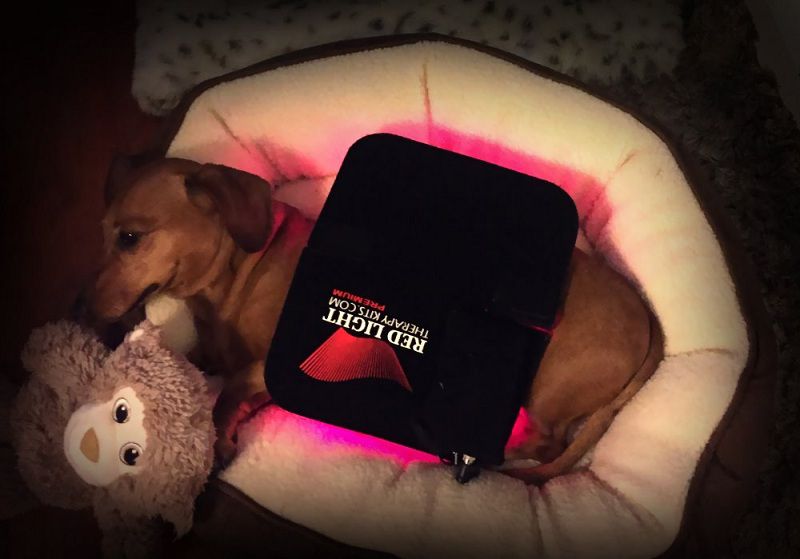Dogs are our family members. Whether our excellent friends are competitors or companions, we want them to be better-off and healthy. If you are like us, your dog does not live outside tied to a rope. Your dog belongs in the house with you, eats in the kitchen, watches television with you, and is part of the family.
What do you do when your best friend gets injured or gets old, and you see a little slack or trouble getting up? You wish the best quality of life to your faithful friend. After all, your puppy gives you unconditional love.
Your veterinarian can suggest one of the many medications available, Rimadyl or Previcox, or a variety of other anti-inflammatory drugs, and they are excellent in the short term, but most have unpleasant side effects.
Light therapy offers dogs significant benefits in both injury rehabilitation and a performance aid for the sports dog. Veterinary use of light therapy has been perceived as an effective way to treat dogs, horses and almost any other type of animal for a wide range of conditions. Similar to the origins of human light therapy, low-level laser therapy (LLLT) was the primary method of treatment in animals.

What is Light Therapy for Dogs?
Light therapy can be defined as an LED or a laser, which have their respective differences. The LEDs installed on the electrodes generally deliver wavelengths that penetrate the skin to spell wounds, infections, and acupuncture points. In addition, infrared wavelengths can provide deep healing of tendons, ligaments, muscles, and bones.
Laser therapy can provide cold level light energy at specific frequencies. These can change physiology at the cellular level. Some of the physiological changes can decrease inflammation, reduce pain and feelings of transmission.
Treatments with laser therapy may vary conditional to the type of laser used and the condition of your dog. The greatest course of action would be to take professional help first to understand exactly what your dog needs for this therapy.
How Does Light Therapy for Dogs Work?
Using LEDs or LASER light, the LLLT penetrates your dog’s skin, blood, muscles, and bones using specific photon wavelengths. The photoreceptors in your animal’s cells absorb this light energy, enhancing the healing process by giving the cells a boost of energy.
Different wavelengths reach different layers of tissue. Red light, for example, is more efficiently absorbed by hemoglobin-rich tissues and is beneficial in healing superficial wounds and stimulating acupressure points.
Near infrared light can pass through deeper tissues such as tendons, ligaments, bones, joints, and muscles. Ideally, a combination of red and near-infrared light is used in a light therapy session.
How Much Does Light Therapy for Dogs Cost?
Typically, light therapy treatments at veterinary clinics range from $ 75 to $ 125 per session. To buy your own phototherapy device, you can spend between $ 150 and $ 2,000. Parents of dogs can give their furry babies light therapy at home at the touch of a button. Handheld light therapy devices are small and light, easy to hold, and have an automatic 15-minute timer.
While some dogs can be fortified more than others, most are happy to sit for a short session of light therapy. If you’re short on time, some light therapy devices can be found in the form of pads that can be attached at the back or any part of the body of your dog. They are designed for comfort and emit a small level of relaxing warmth.
Some veterinary clinics offer light therapy treatments that can cost as less as $ 40 to $ 100 per treatment, including everything in the treatment. Hence, depending on the number of dogs you have and their sensitivity to the conditions that can be treated with laser therapy, this could be a good investment.

What is New to Light Therapy for Dogs?
Some innovators like Christina Reguli and her partner Dennis are improving the technology. They created the Gospel Canine Light Therapy and chose to use electrodes for a more innovative and non-invasive approach.
Its technology makes light therapy easier and more available to use in several different contexts. “We have been involved in various organizations,” said Christina. “Often rescues bring animals with a wide variety of problems, and our phototherapy pads can help.”
The relaxing quality of light or laser therapy benefits almost all dogs. In addition, it can give older dogs a better quality of life and improve pain control. By increasing comfort and mobility, these small therapeutic tools can further improve the well-being of your pet.
Some laser therapies may require medical professionals to administer the treatment. In contrast, others are similar to the light therapy kits available for humans. Ask your veterinarian if he can operate one for your dog.
Meta Description: Light therapy offers dogs significant benefits in both injury rehabilitation and a performance aid for the sports dog. Does light therapy for dogs worth it?
